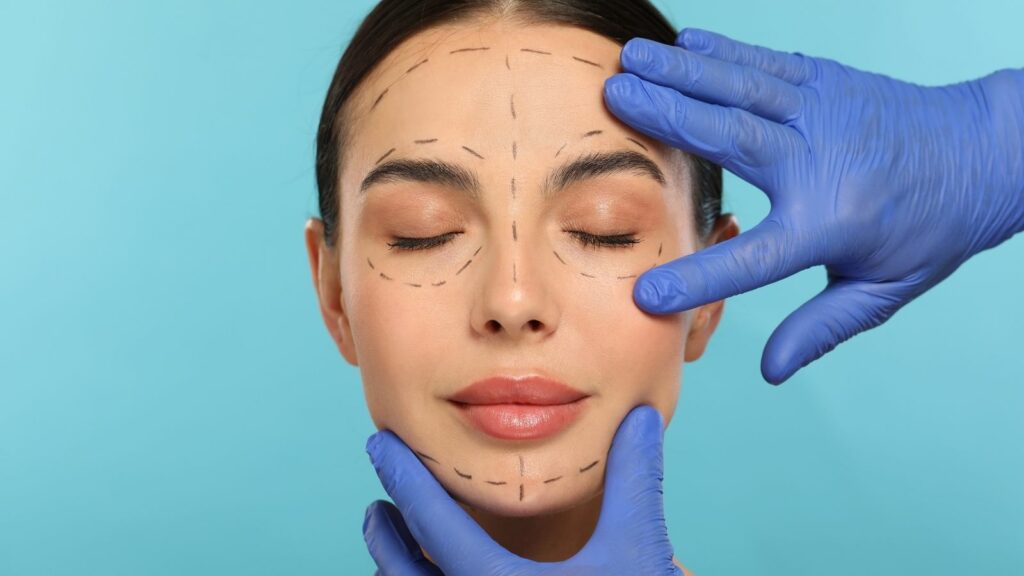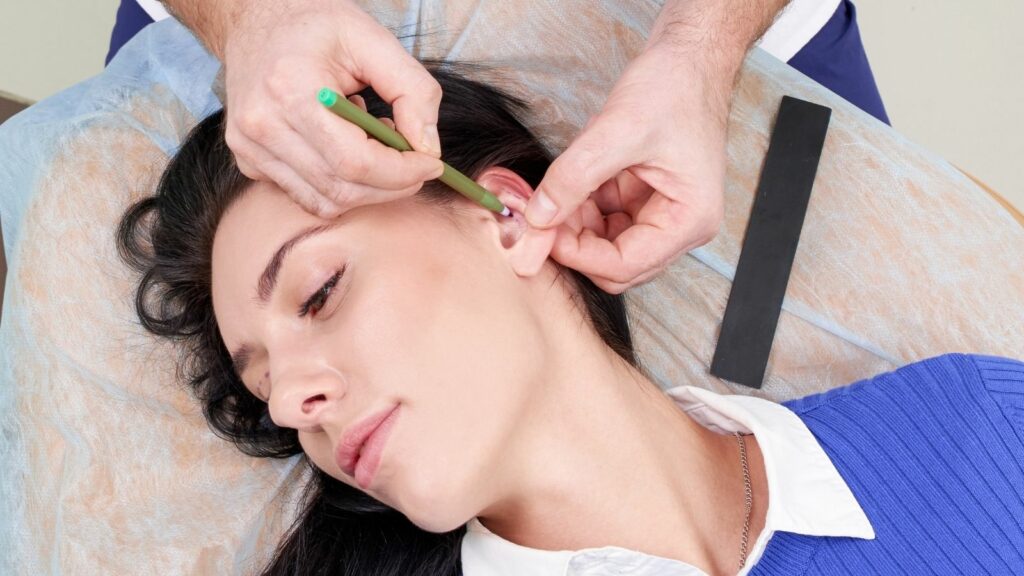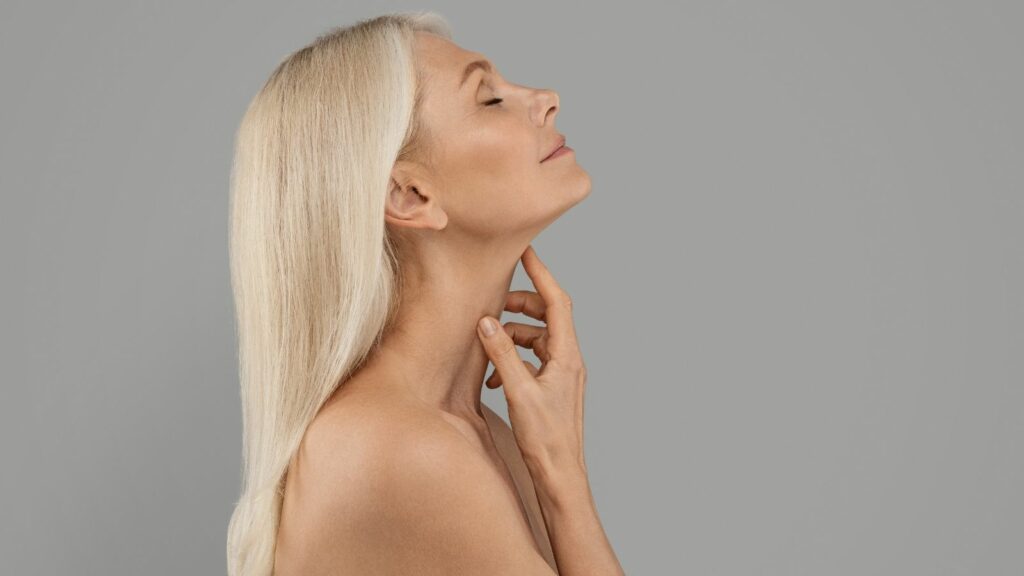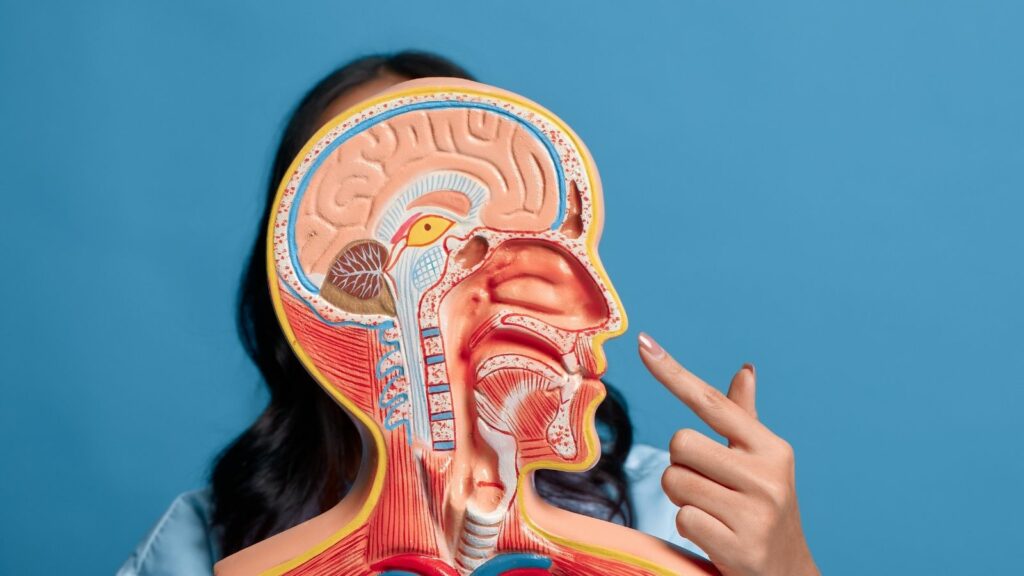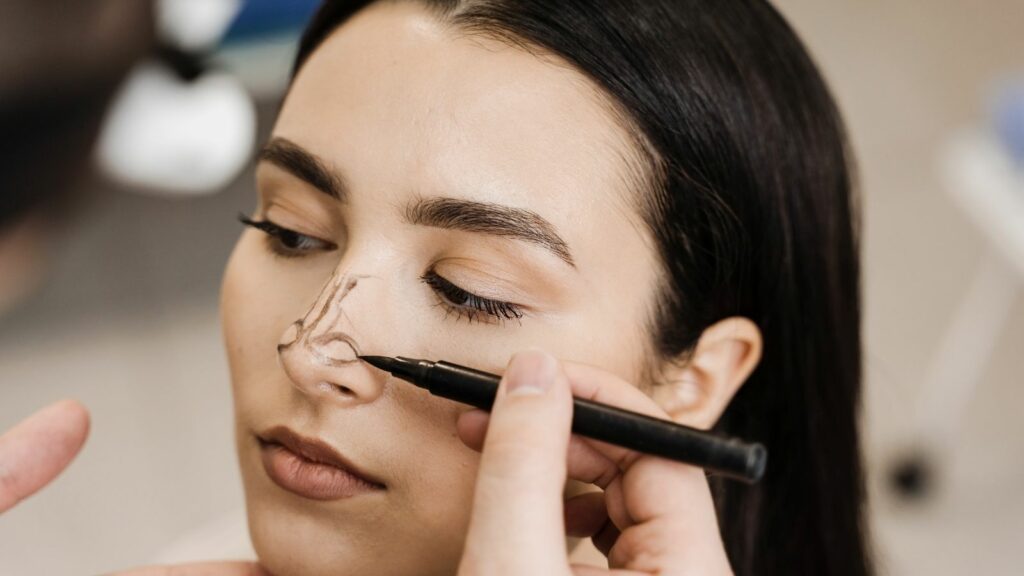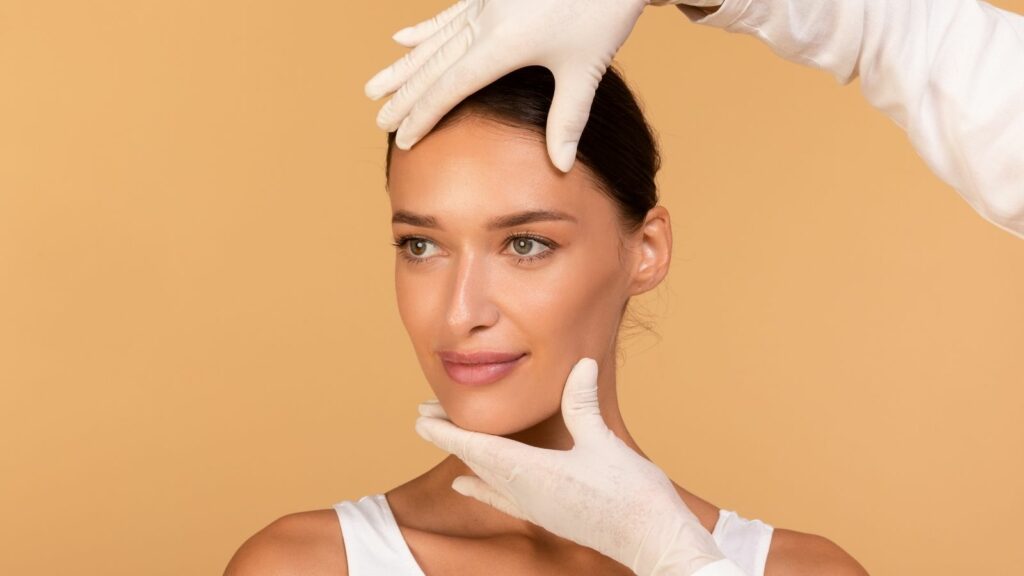Rhinoplasty, also known as nose surgery, is a surgical procedure performed to improve both the aesthetic appearance of the nose and its functions, such as breathing; facelift, or rhytidectomy, aims to eliminate signs of aging such as sagging, deep lines, and volume loss in the face and neck area, providing a younger and more dynamic appearance. These two aesthetic surgical procedures restore the overall harmony and balance of the face through personalized planning. Modern techniques aim to give the face a fresh, natural, and rested expression while avoiding exaggerated and artificial results.
What Is Rhinoplasty and Why Is It Important?
Rhinoplasty, commonly known as a nose job, is the art of reshaping the bone and cartilage structures of the nose to make it more harmonious with the overall facial appearance. However, this procedure is not only about external appearance. Just as a building must be visually appealing yet functionally comfortable for its residents, the nose must also be both aesthetically pleasant and functionally healthy. Positioned at the center of the face, the nose is one of the most critical elements that defines our expression, character, and facial balance. Therefore, even a millimetric change in rhinoplasty can completely alter the overall perception of the face.
Modern rhinoplasty philosophy approaches aesthetics and function as a whole. In the past, removing a hump on the nasal bridge or reducing the nasal tip was considered sufficient, but now we know that the stronger the internal structure of the nose, the more beautiful and long-lasting the external results will be. The septum, the vertical central support of the nose, acts as the foundation of the external nasal framework. If this foundation is crooked, the structure built upon it will also eventually become crooked. For this reason, a successful rhinoplasty today not only corrects the visible aspect but also improves basic functions such as breathing, aiming to enhance quality of life. The surgeon’s task is to design a nose that is aesthetically pleasing and functionally healthy, tailored to the patient’s facial features.
Who Is a Good Candidate for Rhinoplasty?
Candidates suitable for rhinoplasty are generally evaluated in three main categories. It is important that these individuals have completed their physical development and have realistic expectations about the outcome. The main motivations are as follows:
Aesthetic Concerns: These individuals are not satisfied with the harmony of their nose relative to their other facial features. Frequently expressed aesthetic concerns include:
- A hump on the nasal bridge
- The nose appearing too large or too small in profile
- A droopy, sagging, or excessively upturned nasal tip
- A wide, thick, or “bulbous” nasal tip
- Nostrils that are asymmetric or too wide
- The nose appearing crooked or deviated when viewed from the front
- A nasal bridge that is too wide or too flat
Functional Problems: For these individuals, breathing comfortably is the priority. Aesthetic corrections are typically performed along with these functional improvements.
- Septum deviation (deviation of the central nasal support)
- Congestion due to turbinate (concha) hypertrophy
- Internal nasal valve narrowing
- Airway problems resulting from previous trauma
Reconstructive Needs: This category includes the correction of significant deformities in nasal structure due to various causes:
- Nasal fractures caused by accidents or trauma
- Congenital anomalies or developmental disorders
- Tissue loss following cancer surgery
What Is the Difference Between Open and Closed Rhinoplasty Techniques?
There are two primary surgical approaches in rhinoplasty: “open” and “closed.” The main difference is where the incisions are made and how much visibility the surgeon has. Neither technique is absolutely superior; each is valuable for different situations. The choice is based on the nature of the procedure and the patient’s nasal structure.
Closed Rhinoplasty: In this technique, all incisions are made inside the nostrils. Therefore, no external scars are visible after the surgery. The surgeon accesses the bone and cartilage framework of the nose through these narrow incisions and performs the necessary reshaping. It is often preferred when more limited changes are required, such as removing a small hump on the bridge or making minimal adjustments to the nasal tip. The advantages include the absence of visible scars and slightly less postoperative swelling.
Open Rhinoplasty: In this approach, in addition to the internal incisions, a small incision is made on the tissue strip called the “columella,” which separates the two nostrils. This small incision allows the nasal skin to be lifted like the hood of a car, exposing the underlying anatomical structures directly and clearly. This gives the surgeon full control and a three-dimensional view. This superior visibility is invaluable for correcting severe deviations, asymmetries, revision (secondary) surgeries, or complex cases that require reshaping the nasal tip with cartilage grafts. When closed with meticulous aesthetic sutures, the incision heals so well that it becomes almost unnoticeable over time. In summary, the closed technique is like looking through a keyhole, while the open technique is like opening the door completely. The chosen approach depends on the extent of work needed inside.
What Do Structural and Preservation Rhinoplasty Philosophies Mean?
Beyond incision techniques, there are two fundamental philosophies in modern rhinoplasty for shaping the nasal dorsum: Structural and Preservation Rhinoplasty. These two approaches determine how the surgery proceeds, especially when correcting hump-type noses.
Structural Rhinoplasty: This is a more traditional technique based on the principle of “removing and rebuilding.” To correct the dorsal hump, the surgeon removes the excess bone and cartilage from the top by cutting or rasping it. This creates an “open roof” deformity. The second and most critical step is to reconstruct and close this roof by bringing the nasal bones closer together and narrowing the upper nose, often using controlled osteotomies and adding cartilage grafts. This method is still indispensable for severe deformities and crooked noses.
Preservation Rhinoplasty (Dorsal Preservation): This is a more modern philosophy focused on preserving anatomy. In this technique, the surgeon does not disturb the natural smooth contour of the nasal dorsum. To eliminate the hump, instead of cutting the structure from above, bone and cartilage are removed from underneath, similar to shortening the legs of a table to lower it. Once the support underneath is reduced, the entire dorsal structure is lowered as a single piece into its new position. Its greatest advantage is maintaining the natural lines and smoothness of the dorsum, reducing the risk of a “surgical” look. Since the middle vault, which is important for nasal breathing, is left intact, functional outcomes are often better. It is ideal for patients whose dorsum is smooth but high in profile.
How Is Rhinoplasty Performed With Piezo (Ultrasonic) Surgery?
Piezo surgery is one of the technological revolutions in rhinoplasty, completely transforming how nasal bones are shaped. Traditional tools such as hammers and chisels require some force to break bone, which may cause unwanted fractures and more trauma to surrounding soft tissues. Piezo surgery, on the other hand, provides a much more precise and controlled method.
This technology uses the power of sound waves. The tip of a special device vibrating at high frequency cuts or shapes only hard tissue—bone—with millimetric precision. These vibrations do not harm surrounding soft tissues like skin, mucosa, vessels, or nerves. It is similar to a sculptor working with a fine pen rather than rough tools. This precision allows the surgeon to shape the nasal bones almost like a work of art.
The greatest benefits for patients appear during the healing process.
- Less bruising
- Less swelling
- Less postoperative pain
- Faster recovery
- More comfortable postoperative experience
Thanks to this technology, rhinoplasty has become far less traumatic and much more comfortable for patients.
What Is a Facelift (Rhytidectomy)?
Despite what the name suggests, a facelift is not simply “stretching the skin.” It is a comprehensive rejuvenation procedure designed to reverse structural changes caused by time—such as gravity, volume loss, and decreased elasticity. The philosophy of the modern facelift is similar to a tailor-made garment. Instead of pulling only the external fabric (the skin), the surgeon also addresses the inner lining and structure (the deeper tissues) that determine the garment’s fit, achieving natural and long-lasting results.
The primary goal of this operation is to correct the changes that create a tired, sad, or sagging expression, giving the patient a more rested, fresh, and energetic appearance. The aim is not to transform the patient into someone else, but to resemble their younger self. It is important to note that a facelift does not improve fine surface wrinkles, pigmentation, or skin quality. It is a structural repair procedure; surface treatments like laser or peeling may still be necessary.
What Problems Does a Facelift Correct?
A facelift primarily targets signs of aging in the mid and lower face as well as the neck area. The main issues effectively corrected by this procedure include:
- Sagging along the jawline that disrupts facial contours (jowls)
- Deep lines extending from the sides of the nose to the corners of the mouth (nasolabial folds)
- Lines extending from the corners of the mouth to the chin, creating a sad expression (marionette lines)
- Loss of cheek volume and sagging of the midface
- Fat accumulation and looseness in the under-chin area
- Vertical neck bands and the “turkey neck” appearance
- Loss of facial oval and the face becoming more square-shaped
What Are the Different Facelift Techniques?
Modern facelift surgery is not a single method. Since each patient’s facial structure, degree of aging, and needs are different, the surgeon’s toolbox includes various techniques suitable for different situations. All of these techniques target the SMAS, a key supportive layer beneath the skin, but they manipulate this layer at different depths and in different ways.
- SMAS Techniques (Plication/SMASectomy): These are reliable methods forming the basis of facelift surgery. After lifting the skin, the surgeon tightens the SMAS layer by folding it with sutures (plication) or removing a part of it and suturing the edges together (SMASectomy). This is effective for lower face sagging and jawline definition but has more limited impact on midface sagging.
- Deep Plane Facelift: Currently considered the most advanced and comprehensive facelift technique. In this approach, the skin and underlying SMAS are not separated. Instead, the surgeon enters a natural anatomical plane beneath the SMAS and lifts these layers as one unit. The key is releasing the retaining ligaments of the face. Like freeing a taut elastic band, releasing these ligaments allows sagging tissues to be repositioned vertically without tension. This improves not only the jawline and neck but also the cheeks and midface. Results are extremely natural, long-lasting (often 10–15 years or more), and far from the “tightened” look. It provides the strongest and most holistic rejuvenation.
- Short-Scar Facelift (MACS Lift): Suitable for patients seeking a less invasive option, generally younger individuals with mild to moderate aging signs. The incision is limited to the area in front of the ear and does not extend behind it, resulting in a shorter scar. The SMAS is suspended upward using permanent sutures similar to purse-string stitches. It improves the jawline and cheeks but is limited in treating advanced neck sagging or prominent neck bands.
What Is the Role of Fat Injection in Facelift Surgery?
Facial aging can be compared to a grape. Over time, the grape both sags and shrinks as it loses water. Our face undergoes a similar process: tissues sag due to gravity and simultaneously lose fat volume, meaning the face “deflates.”
A facelift perfectly corrects the “sagging” aspect of this process—lifting the grape back up—but does not restore the lost fullness. This is where fat injection comes in. This procedure represents the “volume restoration” or “re-inflating the deflated balloon” aspect of facial rejuvenation.
Fat is harvested from the patient’s own body (usually the abdomen or hips), purified, and injected into areas of the face with volume loss. When combined with a facelift, this creates results that are far more natural, balanced, and harmonious.
- Restores youthful fullness to the cheekbones.
- Fills hollow temples and under-eye areas.
- Softens deep nasolabial folds.
- Adds overall vitality and freshness to the face.
A facelift and fat injection are two powerful, complementary elements. One repairs the structure, while the other replenishes the lost cushioning.
Can Rhinoplasty and Facelift Surgery Be Performed Together?
Yes, combining these two comprehensive procedures in a single operation is quite common and advantageous for suitable patients. This combination allows the overall facial harmony to be addressed holistically. The nose is the center of the face, while the facelift provides the frame. Aligning these two components at the same time creates a more balanced and satisfying aesthetic result.
It also offers practical benefits for the patient.
- Single Anesthesia: Only one anesthesia session is needed instead of two separate surgeries.
- Single Recovery Period: Two surgeries mean two recovery periods and two times away from work and social life. When combined, the patient enjoys both results with only one recovery process.
- Cost Advantage: Combined surgeries are often more economical than the total cost of two separate operations.
Of course, this decision requires that the patient’s overall health is good and that the surgery duration remains within safe limits. This should be carefully evaluated by an experienced surgical and anesthesia team.
What Is the Recovery Process After Rhinoplasty?
Rhinoplasty recovery requires patience, and it may take up to a year for the final result to appear. However, returning to social life is usually quite fast.
First Week: This is the most challenging period.
A protective splint (cast) is placed on the nose:
- Swelling and bruising around the eyes are at their peak.
- Breathing occurs through the mouth due to nasal congestion.
- Keeping the head elevated and applying cold compresses is recommended.
- The splint and any sutures are removed at the end of this week.
- Second to Fourth Week: This is the period of significant improvement.
- Most of the swelling and bruising rapidly decreases.
- The new shape of the nose gradually becomes visible.
- Patients usually return to work and daily activities.
- Breathing becomes noticeably easier.
- One to Three Months: Healing continues.
- About 80% of the swelling resolves.
- Nasal contours become more defined.
- Light exercise may be resumed.
- Six Months to One Year: The final refinements appear.
- Remaining swelling at the nasal tip completely disappears.
- The tissues fully soften, and the nose takes its final shape.
What Should Be Considered After Facelift Surgery?
Facelift recovery may be more comfortable than rhinoplasty but still requires care.
First Week: Rest and proper care are essential.
- A bandage or special compression garment may be placed around the head.
- Swelling and bruising increase in the first 2–3 days, then begin to decrease.
- Keeping the head elevated at all times (sleeping with multiple pillows) is very important.
- Physical activity should be avoided.
- Sutures are generally removed at the end of this week.
Second Week: Return to social life begins.
- Swelling and bruising significantly decrease.
- Most patients feel well enough to go outside and may use makeup to conceal remaining marks.
- Returning to work is usually possible during this time.
- Fourth to Sixth Week: Nearly complete return to normal.
- Patients feel “healed.”
- All normal activities and sports may be resumed.
- Minor firmness and numbness in the face continue to improve.
- Final results continue to improve in the following months as swelling fully resolves and tissues settle.

